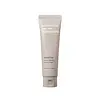Yadah Cosmetics Daily Vege Mask Versus innisfree Pore Clearing Calming Clay Mask with Volcanic Clusters
What's inside
What's inside
 Key Ingredients
Key Ingredients

 Benefits
Benefits

 Concerns
Concerns

No concerns
 Ingredients Side-by-side
Ingredients Side-by-side

Water
Skin ConditioningButylene Glycol
HumectantGlycerin
Humectant1,2-Hexanediol
Skin ConditioningDipotassium Glycyrrhizate
HumectantHydroxyacetophenone
AntioxidantTromethamine
BufferingAcrylates/C10-30 Alkyl Acrylate Crosspolymer
Emulsion StabilisingAllantoin
Skin ConditioningCaprylyl Glycol
EmollientBetaine
HumectantGardenia Jasminoides Fruit Extract
Cosmetic ColorantAdenosine
Skin ConditioningPanthenol
Skin ConditioningXanthan Gum
EmulsifyingDisodium EDTA
Glyceryl Acrylate/Acrylic Acid Copolymer
HumectantSodium Hyaluronate
HumectantResveratrol
AntioxidantSaccharomyces/Grape Ferment Extract
Skin ConditioningVitis Vinifera Juice Extract
AntioxidantVitis Vinifera Stem Extract
Skin ConditioningWine Extract
AntioxidantDextrin
AbsorbentEthylhexylglycerin
Skin ConditioningDipropylene Glycol
HumectantWater, Butylene Glycol, Glycerin, 1,2-Hexanediol, Dipotassium Glycyrrhizate, Hydroxyacetophenone, Tromethamine, Acrylates/C10-30 Alkyl Acrylate Crosspolymer, Allantoin, Caprylyl Glycol, Betaine, Gardenia Jasminoides Fruit Extract, Adenosine, Panthenol, Xanthan Gum, Disodium EDTA, Glyceryl Acrylate/Acrylic Acid Copolymer, Sodium Hyaluronate, Resveratrol, Saccharomyces/Grape Ferment Extract, Vitis Vinifera Juice Extract, Vitis Vinifera Stem Extract, Wine Extract, Dextrin, Ethylhexylglycerin, Dipropylene Glycol
Water
Skin ConditioningKaolin
AbrasiveButylene Glycol
HumectantSilica
AbrasiveGlycerin
HumectantBentonite
AbsorbentCI 77891
Cosmetic Colorant1,2-Hexanediol
Skin ConditioningVolcanic Ash
AbrasiveMicrocrystalline Cellulose
AbsorbentOnsen-Sui
Xanthan Gum
EmulsifyingCellulose Gum
Emulsion StabilisingPropanediol
SolventDisodium EDTA
Ethylhexylglycerin
Skin ConditioningLactic Acid/Glycolic Acid Copolymer
Skin ConditioningGluconolactone
Skin ConditioningMadecassoside
AntioxidantLactic Acid
BufferingPolyquaternium-10
Tocopherol
AntioxidantWater, Kaolin, Butylene Glycol, Silica, Glycerin, Bentonite, CI 77891, 1,2-Hexanediol, Volcanic Ash, Microcrystalline Cellulose, Onsen-Sui, Xanthan Gum, Cellulose Gum, Propanediol, Disodium EDTA, Ethylhexylglycerin, Lactic Acid/Glycolic Acid Copolymer, Gluconolactone, Madecassoside, Lactic Acid, Polyquaternium-10, Tocopherol
 Reviews
Reviews

Ingredients Explained
These ingredients are found in both products.
Ingredients higher up in an ingredient list are typically present in a larger amount.
1,2-Hexanediol is a synthetic liquid and another multi-functional powerhouse.
It is a:
- Humectant, drawing moisture into the skin
- Emollient, helping to soften skin
- Solvent, dispersing and stabilizing formulas
- Preservative booster, enhancing the antimicrobial activity of other preservatives
Butylene Glycol (or BG) is used within cosmetic products for a few different reasons:
Overall, Butylene Glycol is a safe and well-rounded ingredient that works well with other ingredients.
Though this ingredient works well with most skin types, some people with sensitive skin may experience a reaction such as allergic rashes, closed comedones, or itchiness.
Learn more about Butylene GlycolDisodium EDTA plays a role in making products more stable by aiding other preservatives.
It is a chelating agent, meaning it neutralizes metal ions that may be found in a product.
Disodium EDTA is a salt of edetic acid and is found to be safe in cosmetic ingredients.
Learn more about Disodium EDTAEthylhexylglycerin (we can't pronounce this either) is commonly used as a preservative and skin softener. It is derived from glyceryl.
You might see Ethylhexylglycerin often paired with other preservatives such as phenoxyethanol. Ethylhexylglycerin has been found to increase the effectiveness of these other preservatives.
Glycerin is already naturally found in your skin. It helps moisturize and protect your skin.
A study from 2016 found glycerin to be more effective as a humectant than AHAs and hyaluronic acid.
As a humectant, it helps the skin stay hydrated by pulling moisture to your skin. The low molecular weight of glycerin allows it to pull moisture into the deeper layers of your skin.
Hydrated skin improves your skin barrier; Your skin barrier helps protect against irritants and bacteria.
Glycerin has also been found to have antimicrobial and antiviral properties. Due to these properties, glycerin is often used in wound and burn treatments.
In cosmetics, glycerin is usually derived from plants such as soybean or palm. However, it can also be sourced from animals, such as tallow or animal fat.
This ingredient is organic, colorless, odorless, and non-toxic.
Glycerin is the name for this ingredient in American English. British English uses Glycerol/Glycerine.
Learn more about GlycerinWater. It's the most common cosmetic ingredient of all. You'll usually see it at the top of ingredient lists, meaning that it makes up the largest part of the product.
So why is it so popular? Water most often acts as a solvent - this means that it helps dissolve other ingredients into the formulation.
You'll also recognize water as that liquid we all need to stay alive. If you see this, drink a glass of water. Stay hydrated!
Learn more about WaterXanthan gum is used as a stabilizer and thickener within cosmetic products. It helps give products a sticky, thick feeling - preventing them from being too runny.
On the technical side of things, xanthan gum is a polysaccharide - a combination consisting of multiple sugar molecules bonded together.
Xanthan gum is a pretty common and great ingredient. It is a natural, non-toxic, non-irritating ingredient that is also commonly used in food products.
Learn more about Xanthan Gum